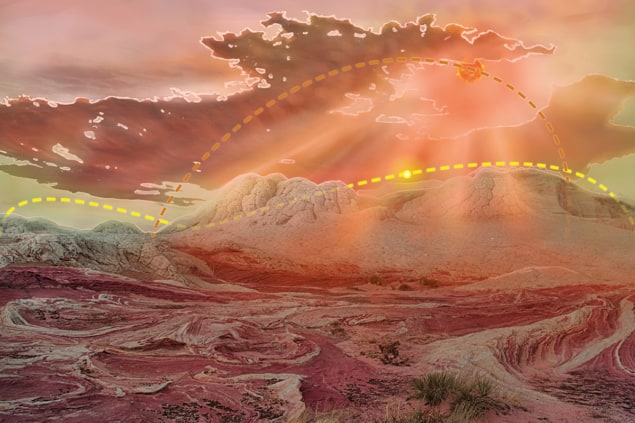Kate Gardner reviews The EXODUS Incident by Peter Schattschneider

Science fiction has always explored scientific possibilities, both current technology and the furthest reaches of what could still be described as science. The most interesting SF uses science as a means to explore society, psychology and other aspects of being human, which often means any physics involved isn’t explored in depth. Even “hard science fiction” – depicting science that is possible and central to its plot – rarely goes into great scientific detail.
In that regard, The EXODUS Incident by Peter Schattschneider is an exception to the rule, not only including lengthy discussions of physics (and indeed other sciences) within its pages, but also featuring a bulky appendix with abundant background detail to the physics explored. It’s also a lively crime thriller set in the future.
Schattschneider is a physicist based at TU Wien who has spent much of his career both writing science fiction and using classic SF in his lectures. So he is well placed to blend complex physics into storytelling.
The novel opens with an academic-paper-style abstract followed by social-media messages (Schattschneider wisely doesn’t specify what platform they’re being posted on), which tell us that the Earth is suffering from catastrophic climate change, a series of pandemics and of course war. In what might be the last chance to save humanity, Europe is sending a spaceship called Exodus to establish a colony in the Proxima Centauri system, on a planet identified as habitable by the Breakthrough Starshot project initiated by Yuri Milner and Stephen Hawking (the novel doesn’t mention the real-life project’s third partner Mark Zuckerberg).
After that set-up, I was a little confused to find the narrative is not initially set on a spaceship, but instead follows two police detectives in Austria investigating a serial murderer. They are living in a future where Vienna is unbearably hot, meat consumption has been outlawed by the EU and the population is declining fast, but otherwise their police work is familiar from any police procedural you might read or watch on TV. Until, that is, lead investigator Oliver Storm is given access to AI virtual-reality tools to help him explore crime scenes.
Schattschneider’s depiction of Europe in the future is scarily believable. As well as climate catastrophe, there are frequent military check points, border wars (including between the UK and Ireland – an interesting, albeit unnerving, detail) and resource scarcity. Everyone who can is moving further from the equator to temperate climes. One of the fundamentalist groups we encounter call themselves “Thunberg adepts”, who are still struggling to be heard in their call for real action to help the planet.
Schattschneider’s depiction of Europe in the future is scarily believable. As well as climate catastrophe, there are border wars and resource scarcity
The hero, Storm, is a smug, misogynistic character yearning for a past when he could own a car, travel freely and eat as much meat as he wanted to. In a nod to classic fictional detectives, he’s a loner with a shady past and manages to have sex with every woman he takes a shine to, despite being generally rude to them. He is also, importantly, curious about everything he encounters so that over the course of the novel various specialists can explain complex science and technology to him, as a cypher for us readers.
Sadly, Storm does reflect a certain old-fashioned patriarchal tone to the novel as a whole. The small number of women characters have no identifying characteristics beyond their appearance; there are no gay, trans or non-binary characters; men are known by their surname, women by forename; and men appear to be in charge of everything (though perhaps this is a deliberate part of the dystopia that Schattschneider has created).
I decided after a few chapters that it’s best not to worry too much about the minimal character building, as this is not Schattschneider’s strong suit. When he tries to add character detail it’s clumsy and stands out from what is otherwise a strange but enjoyable murder mystery with a futuristic SF backdrop, which develops into fully embraced SF with the crime investigation as the backdrop. And while individual characters are lacking in depth, Schattschneider’s explorations of wider psychological themes are handled well, particularly isolation and conspiracy theories.
The plot goes to some (for me) unexpected places that explore a range of ideas social, political and psychological. Schattschneider’s influences are clear, from The Matrix to Arthur C Clarke, and many of these are acknowledged in fictional conversations between characters.

The story of science fiction and society
This novel is part of Springer’s Science And Fiction series, a collection of both hard science fiction and analysis of SF by scientists. It’s an interesting idea for an academic publisher to pursue, but I couldn’t help noticing that the series’ large roster of editors are all men, and of the 46 books published in the series since 2014, only three are written by women. SF has historically been a tough market to break into for authors who aren’t cis white men, but in recent years that has changed significantly and it’s a shame for a major publisher not to follow that trend.
Despite its flaws The EXODUS Incident is gripping and thought-provoking. The technical details of the Exodus spaceship are particularly thorough. It is propelled by a Bussard ramjet engine and last year Schattschneider co-authored a paper on the feasibility of such a system (Acta Astronautica 191 227) – concluding that the engine could be made to work but would achieve much lower speeds than previous studies suggested.
For physics fans, the appendix is the real treasure trove, as here Schattschneider produces a fictional mission report with all the technical details, from the ramjet engine to the type of vegetation that might survive on the exoplanet and its weather systems. But don’t skip ahead to the back of the book as it is full of spoilers.
- 2021 Springer 182pp £22.99pb



